A Plastic Ocean: The truth behind the crisis destroying our seas
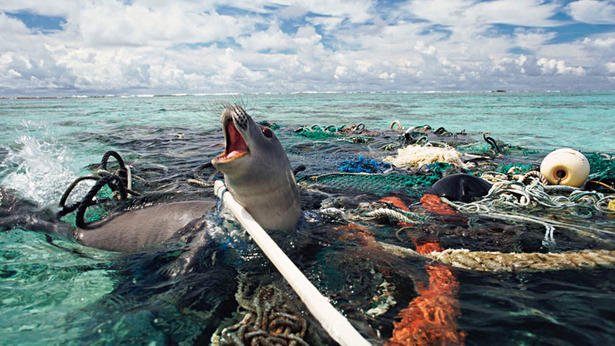
12 JANUARY 2017 BY CLAIRE WRATHALL
The health of the ocean and the life it supports is at risk from the annual avalanche of plastic it receives - one of the biggest threats to the world's oceans. But now a new documentary film, which reveals the shocking truth behind the crisis, is set to turn the tide – in public attitudes, policy and action. Claire Wrathall reports...
Anyone who has sailed in Australian waters will have seen shearwaters, known locally as muttonbirds, wheeling overhead in the sky. The birds are instantly recognisable by their elongated wings, which can span more than a metre, the better for gliding on thermals as they migrate. Though the flesh-footed shearwater subspecies is known to be in decline, around 17,000 breeding pairs remain among the 130 permanent and migratory bird species that can be spotted on Lord Howe Island, one of Australia’s most beautiful satellites. With its fabled “twin peaks” (the mountains Gower and Lidgberd), marine park and World Heritage Site status, it ought to be idyllic, but as Dr Jennifer Lavers, a research fellow at the Institute for Marine and Antarctic Studies in Hobart, Tasmania, knows only too well, this is not the case.
Lavers’ particular interest is seabirds – “the sentinels of marine health,” she calls them – and over the past decade she has made a particular study of flesh-footed shearwaters. In arguably the most shocking sequence of a new feature-length documentary, A Plastic Ocean, she is seen opening the tiny stomach of a 90-day-old chick, one of about 10 dead birds she had collected on a single beach that morning, and extracting 276 individual pieces of plastic, some the size of coins. “There is absolutely no doubt that this bird died as a result of plastic,” she says. “It has literally a gut full of it.”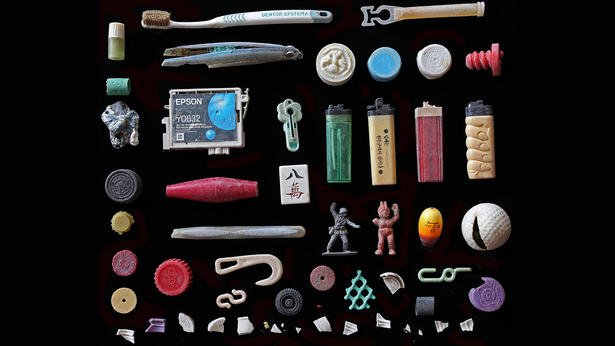
Items found in the stomachs of laysan albatross chicks on Midway Island in the North Pacific
The plastic accounts for 15 per cent of the chick’s body weight. “If we calculate that in human terms,” she explains, “it would be like having six or eight kilos of plastic inside your stomach. Imagine your quality of life. Once ingested, plastic can block or rupture the digestive tract and leak contaminants into the bird’s blood stream, resulting in stomach ulcerations, liver damage, infertility and, in many cases, death.”
Lavers is one of a host of international specialists – from oceanographers and environmentalists to the world champion freediver Tanya Streeter – who appear in the film, which was shot in 20 locations across the globe over four years. The person who set the cameras rolling is producer Jo Ruxton, who conceived the idea as a TV documentary but was pushed – in her words – “to her limits, both personally and financially” to make it happen.
Ruxton spent 14 years in Hong Kong with the World Wide Fund for Nature, where she set up its marine programme. She then joined the BBC’s Natural History Unit, where she produced such seminal series as The Blue Planet. In 2008 she founded her own media company specialising in underwater filming and logistics. Later that year, back in Hong Kong where she was working on a film about shark finning, she heard about what has become known as the Great Pacific Garbage Patch, a giant free-floating “island” of discarded plastic 1,500 miles off the coast of San Francisco, an agglomeration formed by the predominant circular wind-driven current, and said to be twice the size of Texas and 10 metres deep. It would make a great subject for a documentary, she thought. “I managed to get myself on to a research vessel that was going out to look at it,” she says.
A loggerhead turtle rescued in Sardinia with plastic in her digestive system
But when they got to where it was supposed to be, there was nothing to see – just clear blue water. As soon as the boat was 400 miles off shore, the six scientists aboard began to test the water to check the levels of plankton. The results were horrifying. “Although you couldn’t see anything above the water – it all looked pristine – the closer we got to the centre of the gyre, the more and more dense [the amount of plastic in the water]. The plankton trawls were absolutely choked with tiny fragments of plastic,” she says.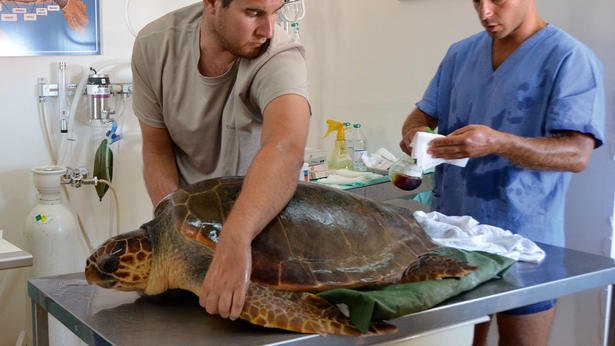
There are five main circular currents, or “gyres”, in the North and South Pacific, the North and South Atlantic and Indian Ocean, formed by the rotation of the Earth, and they collect anything carried from river mouths and coasts and transport it to their centres. Scientists estimate that it takes about 20 years for plastics leaving land to reach the centres of these gyres. Though plastic is ultimately indestructible, sunlight and salt make it brittle, and wave action causes it to break up into fragments. If it has a density of less than one [gram per cubic centimetre] it will float, and if it’s greater than one it sinks. These tiny pieces of “microplastic” mix with plankton and are ingested by the animals at the heart of the food chain. “I realised then that it was a much more insidious problem than I’d thought,” she says, “that it was not something that could feasibly be collected and disposed of carefully.”
If that were not bad enough, the plastic itself was becoming more toxic the longer it remained in the water. As research by marine biologists at San Diego State University found, plastic floating in the water becomes a magnet for toxic chemicals that have washed out to sea. “It absorbs decades’ worth of industrial and agricultural effluent including compounds that have been banned such as DDT and endocrine-disrupting chemicals linked with cancer, auto-immune diseases, infertility and cognitive developmental problems. These all have a route into the food chain by means of plastic waste, which puts a lot of people at risk,” she says. An estimated billion, in fact, which is the number of people on the planet reckoned to rely on fish as their main source of protein.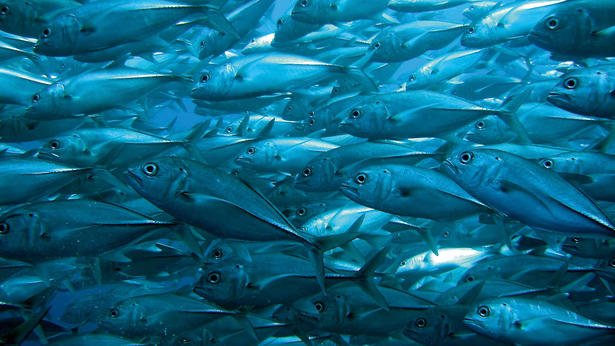
A school of jacks in the Pacific Ocean
“We are now producing more than 300 million tonnes of plastic a year,” Ruxton continues, “half of which is for single use.” Much of this will end up in the oceans, which are already believed to contain the eight million tonnes that are dumped annually.
The numbers Ruxton cites are horrifying. The Container Recycling Institute says 100.7 billion plastic drinks bottles were sold in the US in 2014, equating to 315 bottles per person and 14 per cent of all litter. More than half were made to package water, a litre bottle of which will have used six litres of water and a quarter-litre of oil in its manufacture. In short, the world needs a wake-up call.
Ruxton was inspired in part by the success of The End of the Line, Ocean Awards judge Charles Clover’s documentary about the devastation on the oceans wrought by overfishing that gave rise to Blue Marine Foundation, which campaigns for and facilitates the creation of marine reserves. She decided that rather than take the film to a broadcaster, she would self-fund it, so, with Sonjia Norman, a lawyer and the film’s executive producer, she set up the Plastic Oceans Foundation. Its first project was to raise the money to make the film, which is fronted and directed by the Australian-born, Hong Kong-based journalist (and keen surfer) Craig Leeson, with whom Ruxton first worked on a programme about Hong Kong’s population of pink dolphins.
To ensure the film has a legacy, the charity will continue to trumpet its message and campaign for cleaner oceans through education, business (in terms of what can be done to encourage sustainability), science and policy. “We’ve made the film,” she says. “Now the real work begins. I want this to be a game changer.”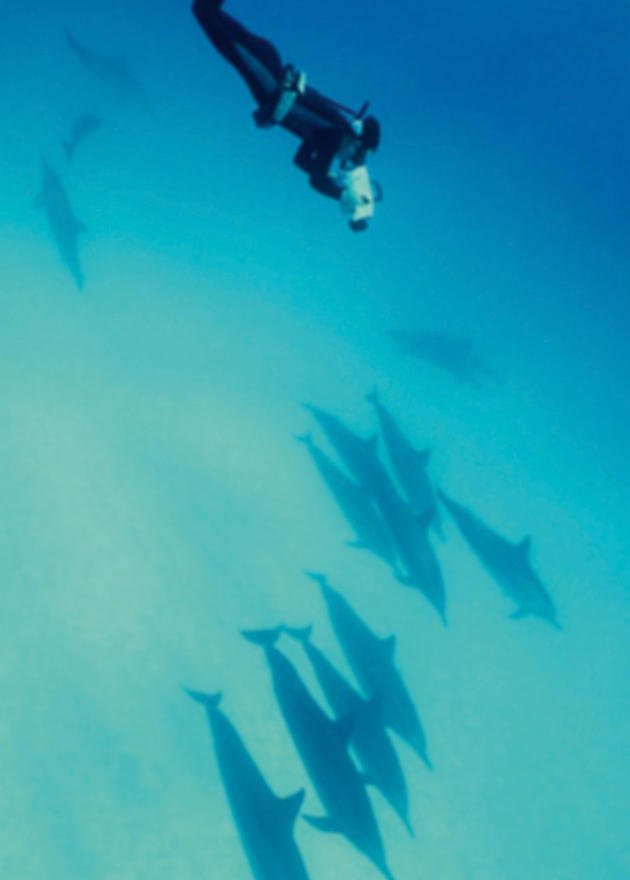
The A Plastic Ocean team filming dolphins
Despite the gravity of the film’s message and the horror of some images, it is not without sublime natural beauty. It begins with Leeson searching for the elusive pygmy blue whale – the smallest known subspecies of the world’s largest animal, though they can grow to lengths of about 24 metres – in the Indian Ocean 30 miles south of Sri Lanka. The film features the first underwater footage of the majestic marine mammal. Inevitably there is plastic floating on the surface.
The film is packed with adventure too. Witness the dives, unencumbered by scuba equipment, made by Tanya Streeter. And Professor Cristina Fossi, of the University of Siena, firing harmless darts with a crossbow from the side of a boat as a means she has pioneered of collecting blubber biopsies from dolphins as they frolic above the water. There is even a submarine: a sequence shot off Marseille in the Mediterranean in which the late marine conservationist and underwater cinematographer Mike deGruy descends 420 metres to an “abyssal plain” in a Comex submersible (a Remora 2000 Twin Seat 610M), where he encounters discarded plastic bottles on the silty seabed.
“This isn’t like climate change or ocean acidification where you feel helpless and wonder what you can do,” Ruxton continues. “This is a problem we can solve through a change in behaviour. I want to get to the stage where buying bottled water is as frowned upon as smoking has become.”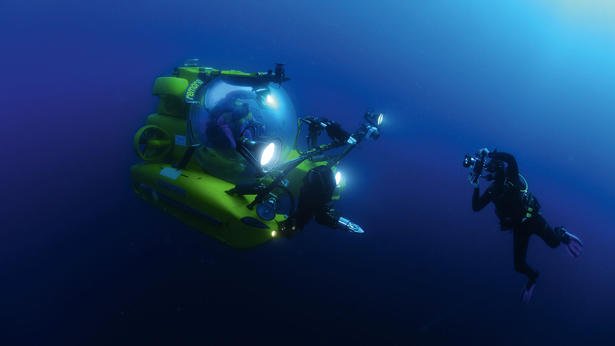
Exploring the deep in a submersible off the coast of Marseille
Of course, plastic will always be with us and there are fashion and beauty brands helping save the oceans. The challenge is what we do with it when it’s served its purpose. As Leeson puts it: “I’m not anti plastic, I’m anti plastic in the environment. If we manufacture it and use it we must learn how to deal with it properly before it gets in to the environment and starts to wreak havoc.” In the film, he shows how all packaging in Germany has been recovered since 1991, “eliminating plastic waste from the environment and turning a profit by converting it into pre-plastic pellets that can be turned into new plastic”. Which is not to say that Germany’s Baltic and North Sea beaches, nor indeed its waters, have been returned to a state of grace. There’s too much non-German plastic waste at large for that. But it is a step in the right direction and a model the rest of the world would do well to follow.
If anything acts as a call to action, it is surely the Polynesian nation of Tuvalu that features in the film. “This beautiful pristine tropical island was completely sustainable until 1978 when it became an independent nation and began to import goods, and everything came wrapped in plastic,” explains Ruxton. “There’s nowhere to bury it. [The atoll is made of coral that is too hard to dig into.] So the whole island looks like a landfill site and they burn it, so there’s a sort of thickness to the atmosphere. It’s really not nice. When we were there we were filming
a family group of 30 people. Five of them had cancer and two had died in the previous 18 months. As filmmakers we can’t say the two are connected with the fact that the air must be full of dioxins and furans. No one’s done the epidemiological study. But I saw it as a vision of our future. The whole planet could end up looking like Tuvalu.”
A Plastic Ocean will be released on January 12, 2017. For more information, see plasticoceans.org
Pictures courtesy of Jo Ruxton; Michael Pitts; Tim Aylen; Plastic Oceans; Kent Backman; Mandy Barker
Congratulations @afrid! You have completed some achievement on Steemit and have been rewarded with new badge(s) :
Click on the badge to view your Board of Honor.
If you no longer want to receive notifications, reply to this comment with the word
STOP